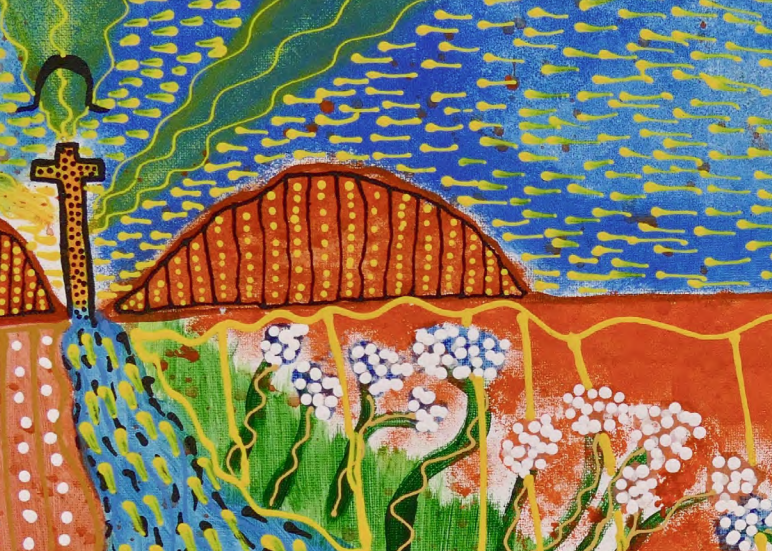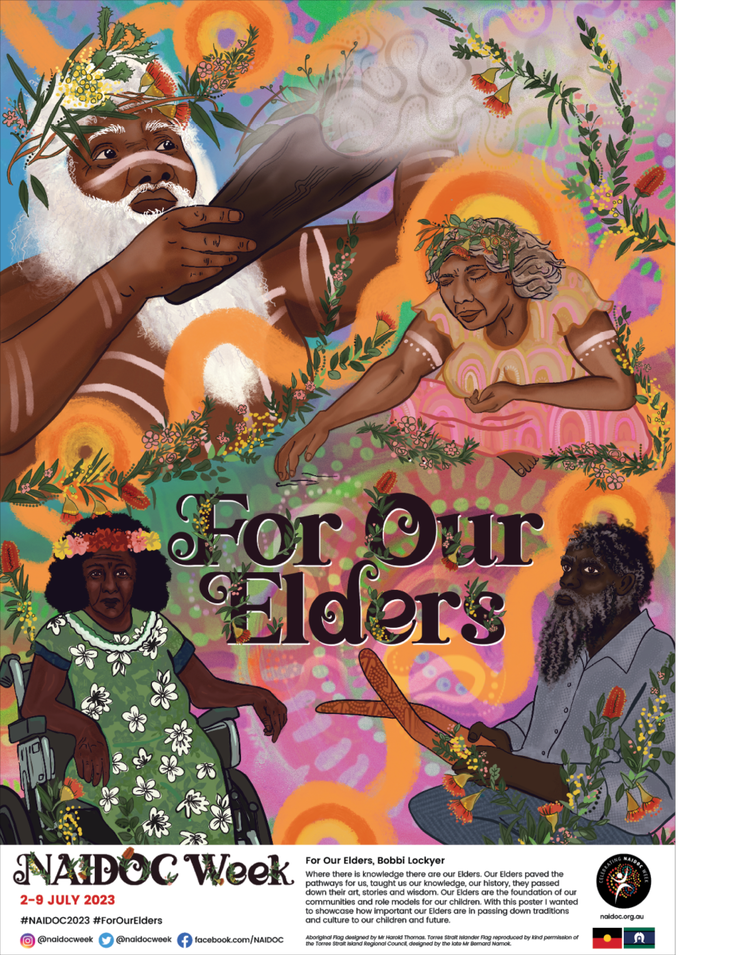NAIDOC WEEK
Aboriginal & Torres Strait Islander Sunday
NAIDOC Week 2nd July-9th July 2023 Star of the Sea Parish A New Life in Christ: Uniting as One People on Aboriginal and Torres Strait Islander Sunday Each year, Catholics from all corners of Australia gather on Aboriginal and Torres Strait Islander Sunday to celebrate the unique gifts and contributions of Australia’s First Peoples. This year’s theme, “A New Life in Christ” reflects the hope and promise of a brighter future, rooted in unity and shared commitment to positive change. As we commemorate this special day on the Liturgical Calendar, we invite you to listen to our voices and walk alongside us on our journey towards progress. Aboriginal and Torres Strait Islander Sunday symbolizes our unity as one people in Christ, and we urge both Indigenous and non-Indigenous Catholics to come together in every Catholic Parish and School across this great Southern land. We welcome any photos, stories, or articles that capture how the day was celebrated in your area. Please share them with us via email at [email protected]. We extend our heartfelt thanks to Caritas Australia for their invaluable contribution in designing this booklet What does NAIDOC stand for?
NAIDOC stands for National Aborigines and Islanders Day Observance Committee. To understand what all that means though, we need a little bit of a history lesson. 1955: the Day of mourning or Aborigines Day was moved from the Sunday before January 26 to the first Sunday in July. It was shifted because people wanted to focus more on celebrating First Nations cultures rather than protesting. 1956: The National Aborigines Day Observance committee was then created to organize national events. 1975: it was decided to celebrate for a whole week rather than just one day. NAIDOC week was born! 1991: NAIDOC Week expanded to recognise Torres Strait Islander people and cultures. And that’s why it’s called NAIDOC Week 
Bobbi Lockyer, a proud Ngarluma, Kariyarra, Nyulnyul and Yawuru artist, born and based on Kariyarra Country in Port Hedland, is the winner of the prestigious National NAIDOC Week Poster Competition for 2023 with her entry, For Our Elders. “Where there is knowledge there are our Elders. Our Elders paved the pathways for us, taught us our knowledge, our history, they passed down their art, stories and wisdom. Our Elders are the foundation of our communities and role models for our children. With this poster I wanted to showcase how important our Elders are in passing down traditions and culture to our children and future.” said Bobbi. |
Why is NAIDOC Week important?
NAIDOC Week is important as it is an opportunity for learning, connection and community. It gives First Nations people and non-Indigenous people the opportunity to celebrate and connect with community and country. It is a chance for everyone not just First Nations people to celebrate all aspects of First Nations history and cultures. As well as this, with its origins of being one of the first major civil rights gatherings in the World. NAIDOC Week is an important time to reflect on the challenges faced by First Nations people – to look at how far we have come and how far we have to go.
NAIDOC Week is important as it is an opportunity for learning, connection and community. It gives First Nations people and non-Indigenous people the opportunity to celebrate and connect with community and country. It is a chance for everyone not just First Nations people to celebrate all aspects of First Nations history and cultures. As well as this, with its origins of being one of the first major civil rights gatherings in the World. NAIDOC Week is an important time to reflect on the challenges faced by First Nations people – to look at how far we have come and how far we have to go.

The black symbolises the Aboriginal people, the red represents the earth and the colour of ochre used in Aboriginal ceremonies, and the circle of yellow represents the sun, the constant renewer of life.

The green panels at the top and bottom of the flag represent the land and the central blue panel represents the sea. The black lines dividing the panels represent the Torres Strait Islander people. The centre of the flag shows a white dhari (dancer’s headdress) which represents Torres Strait Islander culture Underneath the dhari is a white five-pointed star. The star is an important symbol for navigating the sea. The points of the star represent the five island groups in the Torres Strait and the white symbolises peace.

Dolly McGaughey David Miller Regina McCarthy NATSICC Liturgy Team.
